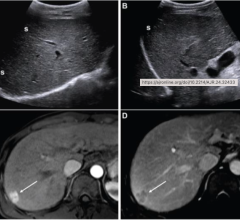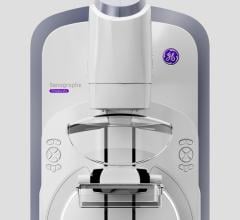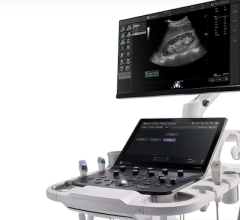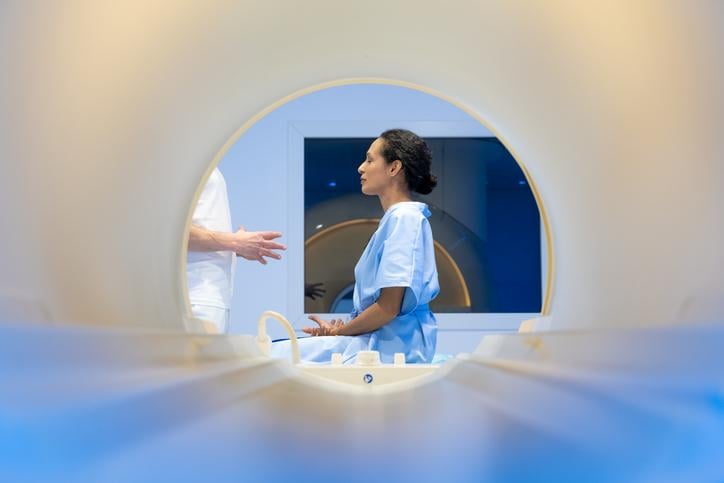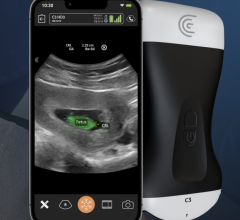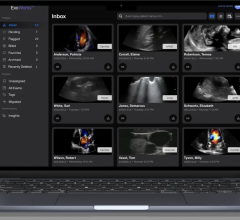Feb. 18, 2025 -— At the Korean Society of Brain Neuromodulation Therapy Winter Conference, in Seoul, Korea, Professor ...
Ultrasound Imaging
Ultrasound uses sound waves to create images. This section includes breast ultrasound, echocardiography (echo), transthoracic echo (TTE), transesophageal echo (TEE), echo contrast, transducers, ultrasound software and point-of-care ultrasound (POCUS).
Jan. 28, 2025 — GE HealthCare recently announced it has received 510(k) clearance from the United States Food and Drug ...
Jan. 24, 2025 — According to an accepted manuscript published in the American Journal of Roentgenology (AJR), the ACR’s ...
In June, the Philips Radiology Experience Tour hit the road to provide healthcare professionals with an opportunity to ...
Jan. 21, 2025 – Clarius Mobile Health, a supplier of high-definition handheld ultrasound systems, has announced ...
Jan. 8, 2025 - EDAP TMS SA, a supplier of robotic energy-based therapies, has announced that the first patient has been ...
Dec. 12, 2024 — RIVANNA has released a report that details significant regional demand for anesthesiologists while also ...
January 23, 2023 — Canon Medical Systems has released a new eBook featuring its new medical imaging roadshow. This new ...
Dec. 1, 2024 — At RSNA 2024, Siemens Healthineers introduced Acuson Sequoia 3.51, a major software and hardware update ...
Nov. 26, 2024 — GE HealthCare has introduced the Pristina Via* mammography system designed to enhance the screening ...
Nov. 13, 2024 — Densitas has launched intelliRisk, its new high-risk breast cancer patient management platform ...
The most common cause of chronic liver disease? Nonalcoholic fatty liver disease (NAFLD). With 25% of the world’s ...
Point-of-care ultrasound (POCUS) is increasingly prominent within undergraduate medical education – but what does this ...
Oct. 14, 2024 — On Oct. 14, GE HealthCare launched Versana Premier, the latest release within the Versana ultrasound ...
Aug. 22, 2024 – AISAP has announced that the U.S. Food and Drug Administration (FDA) has granted 510(k) clearance for ...
There is a high incidence of ultrasound work-related musculoskeletal disorders (WRMSD) among sonographers. Aside from ...
Don't miss ITN's latest "One on One" video interview with AAWR Past President and American College of Radiology (ACR) ...
July 19, 2024 — GE HealthCare announced it has entered into an agreement to acquire Intelligent Ultrasound Group PLC’s ...
Investing in women’s health should not merely be a metric on the equity dashboard — it should drive policy and tactical ...
July 2, 2024 — Delphinus Medical Technologies, a pioneering medical imaging company that developed the SoftVue Breast ...
June 27, 2024 — Clarius Mobile Health, which provides high-definition handheld ultrasound systems, has obtained U.S ...
June 18, 2024 — The International Society of Ultrasound in Obstetrics and Gynecology (ISUOG) has announced details of ...
May 29, 2024 — Strategic Radiology added a third California member to the nation’s leading coalition of independent ...
May 20, 2024 — Exo (pronounced “echo”), a medical imaging software and devices company, announced the release of Exo ...


 February 18, 2025
February 18, 2025 

